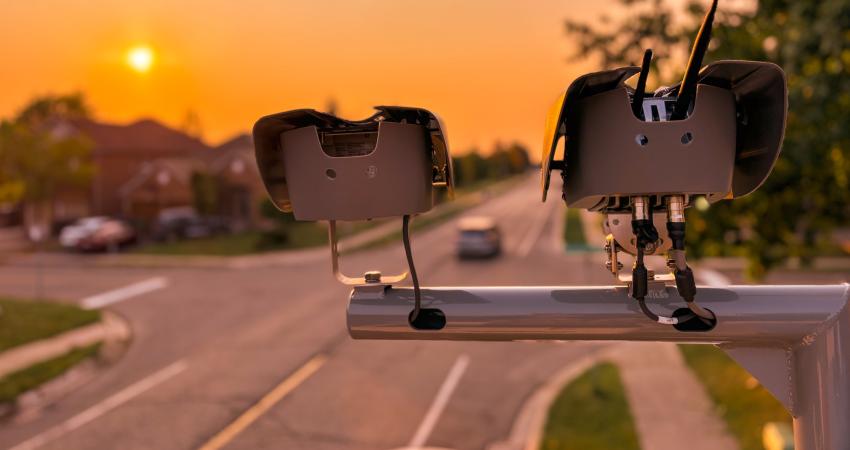David Crawford welcomes new US guidance on public-private partnerships in the public transit sector. Public-private partnerships (P3s) are becoming increasingly favoured as a means of cost-effectively delivering much-needed public transit projects across the US. Previously, researched examples have tended to be on the large-scale while information on the potential for smaller, more localised schemes has been comparatively sparse. In a bid to fill that gap, the ‘Public Transportation Guidebook for Small

A HART vehicle
David Crawford welcomes new US guidance on public-private partnerships in the public transit sector.
Public-private partnerships (P3s) are becoming increasingly favoured as a means of cost-effectively delivering much-needed public transit projects across the US. Previously, researched examples have tended to be on the large-scale while information on the potential for smaller, more localised schemes has been comparatively sparse.
In a bid to fill that gap, the ‘Public Transportation Guidebook for Small- and Medium-Sized Public-Private Partnerships (P3s)’ was issued in September 2017 and offers relevant recent case studies together with a project screening checklist, designed to ease the process for newcomers. The publisher, US Transportation Research Board division, the Transit Cooperative Research Program (TCRP), commissioned the content from New York-based engineering and infrastructure consultancy WSP.
Speaking at the launch, company vice president and contributor Nathan Macek said: “The potential benefits of P3s have been well-publicised. When done right, they often result in lower upfront costs to the public sector and greater efficiency.”
But he highlighted concerns, particularly among smaller agencies, over the apparent complexity of the process. The guide defines, for its purposes, a P3 of any size as an agreement in which the private sector both delivers a service to a public transit agency and takes a share of the risk.
Among the ITS-oriented case studies is Tampa, Florida-based Hillsborough Area Regional Transit (HART), which has partnered with Ohio-based Commuter Advertising to deliver on-board, GPS-enabled and location-based content targeted at passengers to bring in additional revenue. It has awarded the company exclusive rights to install the technology across an entire fleet of 189 vehicles to play 10- to 15-second announcements, mainly audio but with the option of text on an interior crawl screen.
Businesses can identify specific stops for playing their messages, using an online map. The company also secures paid public service announcements from other agencies and allocates HART a predetermined number of free messages for conveying its own service information. HART’s CEO has commended the scheme as being particularly beneficial for small businesses, enabling them to promote their goods or services affordably to targeted audiences.
The recently renewed agreement gives HART a guaranteed annual income of US$20,000, a figure exceeded every year since 2014. The tally for January-September 2017 is US$30,222.
In terms of risk transfer, this sees Commuter Advertising funding the entire installation, operational and marketing costs of the scheme - reflecting HART’s leverage in possessing the necessary distribution system. The fact of the required expenditure being carried externally was a strong incentive for the agency to adopt the system – an element integral to the company’s business model, which means it has to generate revenue in excess of its guaranteed payments. Similar schemes are operating in other US urban centres.
Elsewhere in Florida, the Pinellas Suncoast Transit Authority (PSTA) has partnered since 2016 in a ‘Direct Connect’ pilot with taxi-hailing company Uber and a local cab company, United Taxi, to offer a subsidised alternative for commuters in two areas of Pinellas County. Regular services, costing around U$150,000 a year, were due to be cut because of low ridership levels.
PSTA now gives users cash vouchers towards the cost of rides, to and from designated bus stops in defined zones, which can be booked by passengers using smartphone apps. The idea derives from an existing partnership between Uber and the University of Florida at Gainesville, which offers students discounted journeys within the campus zone.
At a cost to PSTA of US$40,000 for the initial year, Direct Connect has saved it over US$100,000 on the pilot scheme, which has subsequently been extended. In the process, PSTA has passed on the normal risks that public transit agencies incur in carrying passengers to the private operators. Macek warned, however, that agencies “need to be particularly cautious about transferring to other parties the responsibility of properly managing the liabilities associated with delivering safe and secure passenger transport.”
The TCRP sees the scheme as a marker for future P3s involving American transportation network companies, such as Uber and Lyft, that connect enlisted private drivers with smartphone-equipped passengers in real time.
In 2014, the Seattle Department of Transportation (SDoT), in Washington State, persuaded TransitScreen to donate 10 displays offering real-time, non-car travel choices to the owners of relevantly located office, retail and public service buildings. The building owners paid the installation costs and SDoT funded the software development.
The initiative formed part of a city mayor-led campaign to raise awareness of alternative commuting options and so prepare the ground for additional transit provision. TransitScreen took the risk of failing to persuade additional building owners to come in and pay for screens. An SDoT spokesperson told ITS International: “We have found this an informative way to introduce property owners to new technologies for displaying transportation options that are available near their buildings.”
The system is currently operational in 25 other locations across the US.
In California, AC Transit which serves the counties of Alameda and Contra Costa, is benefitting from an electricity purchase agreement with San José-based solar energy provider SunPower Access and private investor MMA Renewable Ventures. In return for hosting MMA’s installation of solar panels on two buildings, AC Transit is buying power, including that needed to run its hydrogen fuel plant, at a fixed rate for 10 years.
The TCRP claims its new guide is the first of its kind in the US. The accompanying project screening checklist, developed from the case studies, is in Microsoft Excel format, to allow interactive use by all parties involved. It contains 57 evaluation-related questions on, for example, stakeholders and the local community for, and evidence of any organised opposition to, the proposal.
For ITS-based projects it says users should consider the pace at which technology is changing, and how the P3 might need to adapt accordingly, and adopt appropriate specifications. Not least, the agreement will need to reflect the private partner’s reasonable expectations of positive financial benefits over time in return for accepting risks, which need to be clearly identified in advance.
Again, there is a need for clearly defined procedures for monitoring the contribution of the private partner, via performance standards and pre-arranged communications channels – possibly adopted from successful P3s in other sectors.
The guide identifies the need for further case studies to support its message; and also for a companion resource covering the scope in P3s for the likes of taxi-hailing companies, which are now actively looking for partnerships with traditional transit agencies. Originally, the transit agencies regarded taxi-hailing companies as competing with them for passengers but an earlier study by the TCRP called Shared Mobility and the Transformation of Public Transit came to a different conclusion. It was able to demonstrate that the more people took advantage of shared modes, the more likely they were also to use public transportation, own fewer cars and spend less money on transportation overall.
The Shared Mobility report went on to emphasise the extent to which transportation network companies and public transit operators can complement each other’s services. For example, services such as Uber and Lyft can cost-effectively extend the public transport catchment areas by providing convenient links to and from regular bus and tram stops or rail and metro stations.
This new study envisages the development of such partnerships when it comes to delivering paratransit services with subsidised ride-hailing services providing door-to-door trips in wheelchair-accessible vehicles to improve services for those with disabilities and deliver operational and management cost savings.
Since the publication of the report, WSP has identified a number of agencies actively looking at this option. Boston’s Massachusetts Bay Transportation Authority has already estimated substantial savings on its established paratransit service, which cost US$97 million in FY 2015 while generating rising levels of complaints over unreliability. But the TCRP warns that the complexities and risk issues are considerably greater than those associated with the current generation of P3s.
The Public Transportation Guidebook is available %$Linker:2 External <?xml version="1.0" encoding="utf-16"?><dictionary /> 0 0 0 link-external here NAP Edu website link false https://www.nap.edu/catalog/24754/public-transportation-guidebook-for-small-and-medium-sized-public-private-partnerships-p3s false false %> . The checklist is available on the TRB %$Linker: 2 External <?xml version="1.0" encoding="utf-16"?><dictionary /> 0 0 0 link-external website TRB website link false http://www.trb.org/Publications/Blurbs/175901.aspx false false %>.
WSP has itself been involved in a number of transportation-sector P3s in the US, and Macek told ITS International that the firm would be interested in supporting further research P3-oriented efforts of the kind indicated.
Public-private partnerships (P3s) are becoming increasingly favoured as a means of cost-effectively delivering much-needed public transit projects across the US. Previously, researched examples have tended to be on the large-scale while information on the potential for smaller, more localised schemes has been comparatively sparse.
In a bid to fill that gap, the ‘Public Transportation Guidebook for Small- and Medium-Sized Public-Private Partnerships (P3s)’ was issued in September 2017 and offers relevant recent case studies together with a project screening checklist, designed to ease the process for newcomers. The publisher, US Transportation Research Board division, the Transit Cooperative Research Program (TCRP), commissioned the content from New York-based engineering and infrastructure consultancy WSP.
Speaking at the launch, company vice president and contributor Nathan Macek said: “The potential benefits of P3s have been well-publicised. When done right, they often result in lower upfront costs to the public sector and greater efficiency.”
But he highlighted concerns, particularly among smaller agencies, over the apparent complexity of the process. The guide defines, for its purposes, a P3 of any size as an agreement in which the private sector both delivers a service to a public transit agency and takes a share of the risk.
Among the ITS-oriented case studies is Tampa, Florida-based Hillsborough Area Regional Transit (HART), which has partnered with Ohio-based Commuter Advertising to deliver on-board, GPS-enabled and location-based content targeted at passengers to bring in additional revenue. It has awarded the company exclusive rights to install the technology across an entire fleet of 189 vehicles to play 10- to 15-second announcements, mainly audio but with the option of text on an interior crawl screen.
Businesses can identify specific stops for playing their messages, using an online map. The company also secures paid public service announcements from other agencies and allocates HART a predetermined number of free messages for conveying its own service information. HART’s CEO has commended the scheme as being particularly beneficial for small businesses, enabling them to promote their goods or services affordably to targeted audiences.
The recently renewed agreement gives HART a guaranteed annual income of US$20,000, a figure exceeded every year since 2014. The tally for January-September 2017 is US$30,222.
In terms of risk transfer, this sees Commuter Advertising funding the entire installation, operational and marketing costs of the scheme - reflecting HART’s leverage in possessing the necessary distribution system. The fact of the required expenditure being carried externally was a strong incentive for the agency to adopt the system – an element integral to the company’s business model, which means it has to generate revenue in excess of its guaranteed payments. Similar schemes are operating in other US urban centres.
Elsewhere in Florida, the Pinellas Suncoast Transit Authority (PSTA) has partnered since 2016 in a ‘Direct Connect’ pilot with taxi-hailing company Uber and a local cab company, United Taxi, to offer a subsidised alternative for commuters in two areas of Pinellas County. Regular services, costing around U$150,000 a year, were due to be cut because of low ridership levels.
PSTA now gives users cash vouchers towards the cost of rides, to and from designated bus stops in defined zones, which can be booked by passengers using smartphone apps. The idea derives from an existing partnership between Uber and the University of Florida at Gainesville, which offers students discounted journeys within the campus zone.
At a cost to PSTA of US$40,000 for the initial year, Direct Connect has saved it over US$100,000 on the pilot scheme, which has subsequently been extended. In the process, PSTA has passed on the normal risks that public transit agencies incur in carrying passengers to the private operators. Macek warned, however, that agencies “need to be particularly cautious about transferring to other parties the responsibility of properly managing the liabilities associated with delivering safe and secure passenger transport.”
The TCRP sees the scheme as a marker for future P3s involving American transportation network companies, such as Uber and Lyft, that connect enlisted private drivers with smartphone-equipped passengers in real time.
In 2014, the Seattle Department of Transportation (SDoT), in Washington State, persuaded TransitScreen to donate 10 displays offering real-time, non-car travel choices to the owners of relevantly located office, retail and public service buildings. The building owners paid the installation costs and SDoT funded the software development.
The initiative formed part of a city mayor-led campaign to raise awareness of alternative commuting options and so prepare the ground for additional transit provision. TransitScreen took the risk of failing to persuade additional building owners to come in and pay for screens. An SDoT spokesperson told ITS International: “We have found this an informative way to introduce property owners to new technologies for displaying transportation options that are available near their buildings.”
The system is currently operational in 25 other locations across the US.
In California, AC Transit which serves the counties of Alameda and Contra Costa, is benefitting from an electricity purchase agreement with San José-based solar energy provider SunPower Access and private investor MMA Renewable Ventures. In return for hosting MMA’s installation of solar panels on two buildings, AC Transit is buying power, including that needed to run its hydrogen fuel plant, at a fixed rate for 10 years.
The TCRP claims its new guide is the first of its kind in the US. The accompanying project screening checklist, developed from the case studies, is in Microsoft Excel format, to allow interactive use by all parties involved. It contains 57 evaluation-related questions on, for example, stakeholders and the local community for, and evidence of any organised opposition to, the proposal.
For ITS-based projects it says users should consider the pace at which technology is changing, and how the P3 might need to adapt accordingly, and adopt appropriate specifications. Not least, the agreement will need to reflect the private partner’s reasonable expectations of positive financial benefits over time in return for accepting risks, which need to be clearly identified in advance.
Again, there is a need for clearly defined procedures for monitoring the contribution of the private partner, via performance standards and pre-arranged communications channels – possibly adopted from successful P3s in other sectors.
The guide identifies the need for further case studies to support its message; and also for a companion resource covering the scope in P3s for the likes of taxi-hailing companies, which are now actively looking for partnerships with traditional transit agencies. Originally, the transit agencies regarded taxi-hailing companies as competing with them for passengers but an earlier study by the TCRP called Shared Mobility and the Transformation of Public Transit came to a different conclusion. It was able to demonstrate that the more people took advantage of shared modes, the more likely they were also to use public transportation, own fewer cars and spend less money on transportation overall.
The Shared Mobility report went on to emphasise the extent to which transportation network companies and public transit operators can complement each other’s services. For example, services such as Uber and Lyft can cost-effectively extend the public transport catchment areas by providing convenient links to and from regular bus and tram stops or rail and metro stations.
This new study envisages the development of such partnerships when it comes to delivering paratransit services with subsidised ride-hailing services providing door-to-door trips in wheelchair-accessible vehicles to improve services for those with disabilities and deliver operational and management cost savings.
Since the publication of the report, WSP has identified a number of agencies actively looking at this option. Boston’s Massachusetts Bay Transportation Authority has already estimated substantial savings on its established paratransit service, which cost US$97 million in FY 2015 while generating rising levels of complaints over unreliability. But the TCRP warns that the complexities and risk issues are considerably greater than those associated with the current generation of P3s.
The Public Transportation Guidebook is available %$Linker:
WSP has itself been involved in a number of transportation-sector P3s in the US, and Macek told ITS International that the firm would be interested in supporting further research P3-oriented efforts of the kind indicated.





